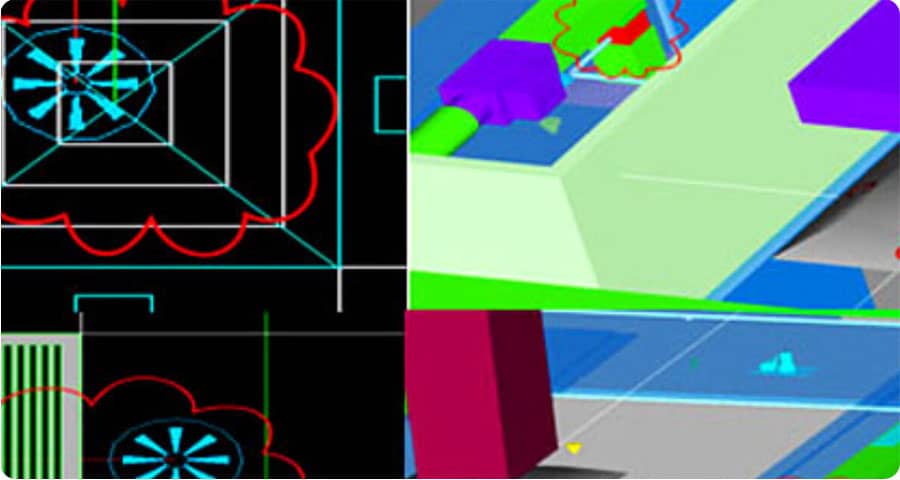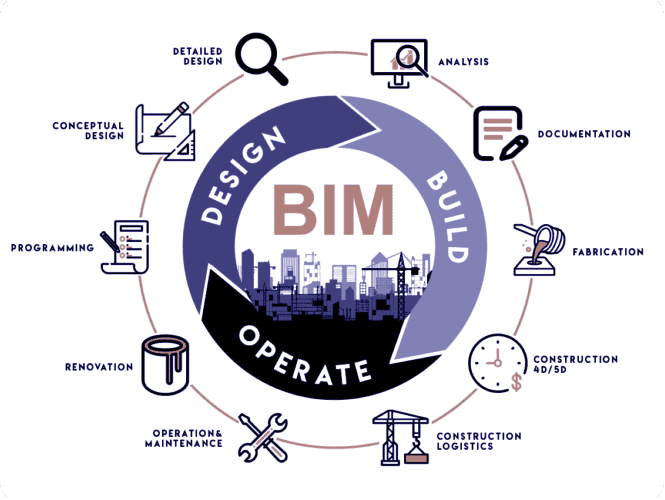
Constructability Review Services in BIM
In the ever-evolving realm of construction, Building Information Modeling (BIM) has emerged as a revolutionary force, streamlining processes and enhancing collaboration. Constructability review services within the BIM framework have become instrumental in ensuring seamless project execution.
The Essence of Constructability Review Services
Unveiling the Purpose
Constructability review services are pivotal in the construction landscape, acting as a proactive measure to identify potential challenges before they manifest on the field. These services aim to enhance project efficiency, mitigate risks, and optimize the construction process. In the dynamic world of construction, anticipating and addressing issues early on can be a game-changer.
Navigating BIM for Constructability Reviews
Embracing BIM technology is at the core of effective constructability reviews. BIM allows for the creation of a virtual representation of the project, facilitating a holistic view that enables stakeholders to identify clashes, discrepancies, and other potential issues. This digital mock-up serves as a proactive tool, aiding in preemptive problem-solving.
Benefits of Constructability Review Services in BIM
By proactively identifying and addressing constructability challenges, BIM constructability review services offer a multitude of benefits:
- Reduced Risks and Errors: BIM allows for a virtual walkthrough of the construction process, revealing potential constructability issues like sequencing problems, constructability of complex geometries, or insufficient space for MEP installations. Addressing these issues early minimizes costly rework later.
- Enhanced Project Efficiency: Constructability reviews help optimize construction methods, material selection, and sequencing. This leads to a more efficient construction process, reducing project timelines and costs.
- Improved Safety: BIM facilitates the identification of potential safety hazards during construction, such as limited access for workers or clashing building elements. Addressing these concerns upfront creates a safer work environment.
- Cost Optimization: By identifying and resolving constructability issues early, the need for costly rework on-site is minimized. Additionally, constructability reviews can help optimize material selection and construction methods, leading to overall cost savings.
- Better Communication and Collaboration: Constructability reviews bring together architects, engineers, contractors, and other stakeholders in a collaborative BIM environment. This fosters better communication and understanding of the design intent and construction realities.
- Enhanced Design Quality: Constructability reviews can lead to a more buildable design that considers practical construction limitations. This can improve the overall quality and functionality of the finished building.
The Constructability Review Process in BIM
A typical BIM constructability review process involves several key stages:
- Project Kickoff and BIM Model Review: The project team reviews the BIM model, establishes constructability review goals, and identifies key areas of focus.
- Code and Standard Compliance Review: The model is reviewed to ensure compliance with relevant building codes and construction standards.
- Constructability Analysis: The BIM model is analyzed for potential constructability issues like sequencing challenges, constructability of complex elements, constructability of MEP systems, constructability of building envelope elements, and accessibility considerations.
- Clash Detection and Resolution: BIM software is used to identify clashes between building elements before construction begins. This allows for proactive resolution, avoiding costly rework on site.
- Constructability Report and Recommendations: A comprehensive report is generated, detailing identified constructability challenges and recommendations for improvement. This report becomes a valuable resource for the entire project team.
Choosing the Right BIM Constructability Review Service Provider
Selecting the right BIM constructability review service provider is crucial for maximizing the benefits. Here are some key factors to consider:
- Experience and Expertise: Choose a provider with a proven track record and a team of experienced BIM specialists, architects, engineers, and construction professionals.
- BIM Software Proficiency: Ensure the provider utilizes industry-leading BIM software and possesses a deep understanding of its constructability analysis capabilities.
- Communication and Collaboration: Choose a provider who prioritizes clear communication and collaboration with your project team throughout the review process.
- Understanding of Local Regulations: Select a provider familiar with local building codes and construction practices relevant to your project location.
Why Choose our service?
Select our service to receive constructability review services inside the BIM framework of unmatched quality. To guarantee flawless project execution, we combine state-of-the-art technology, collaborative knowledge, and a proactive mindset.
Our services are a reliable light in the ever-changing construction industry, offering everything from risk avoidance and cost savings to improved communication. Choose us and see the difference for yourself , where ingenuity and accuracy combine to produce project success never seen before.
The Constructability Review Process
Collaborative Approach
One of the distinguishing features of successful constructability reviews lies in fostering collaboration among various project stakeholders. Architects, engineers, contractors, and other key players must engage in open communication to ensure a comprehensive review. This collaborative spirit promotes a unified understanding of the project's intricacies.
Clash Detection and Resolution
Within the constructability review process, clash detection plays a crucial role. This involves the identification of conflicts or clashes between different components of the construction model. Through BIM, clashes can be detected early, allowing for swift resolution before the project transitions to the construction phase.
Optimization Strategies
Constructability reviews extend beyond issue identification; they provide a platform for optimizing construction strategies. This includes evaluating alternative materials, methods, or sequencing to enhance overall project efficiency. By embracing innovative solutions during the review phase, projects can achieve a higher level of constructability.
Key Benefits of Constructability Reviews
Risk Mitigation
Constructability reviews act as a robust risk mitigation strategy, identifying potential pitfalls and challenges before ground is broken. This proactive approach minimizes the likelihood of costly delays, ensuring a smoother project timeline.
Cost Savings
By addressing issues in the virtual realm, constructability reviews contribute to significant cost savings. Early detection of clashes, errors, or inefficiencies allows for timely adjustments, preventing expensive modifications during the physical construction phase.
Enhanced Communication
Effective constructability reviews foster enhanced communication among project stakeholders. This transparency ensures that everyone involved is on the same page, reducing misunderstandings and enhancing the overall synergy of the project team.
Conclusion
In conclusion, constructability review services are indispensable in the contemporary construction landscape. Through the integration of BIM technology, collaborative processes, and proactive strategies, these reviews pave the way for successful project outcomes. Embracing constructability reviews is not merely a best practice; it is a strategic imperative for those seeking excellence in construction project management.

